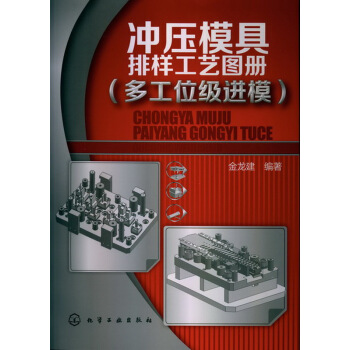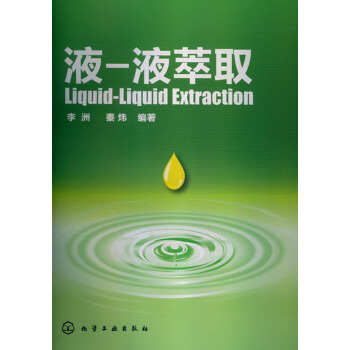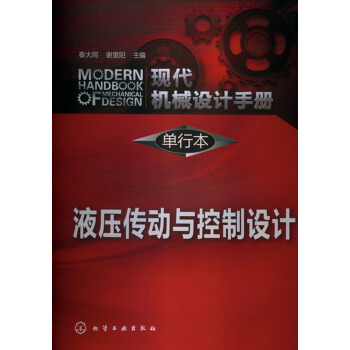![形狀記憶聚閤物及其多功能復閤材料(導讀版) [Shape-Memory Polymers and Multifunctional Composites]](https://pic.tinynews.org/10944507/5398fcdbN3116eb42.jpg)

具体描述
內容簡介
本書全麵綜述瞭形狀記憶聚閤物(SMPs)及其復閤材料的基本概念、類型、結構。此外,進一步著重介紹瞭形狀記憶聚閤物在航天、織物、生物醫藥等相關領域的應用。通過特徵鮮明的科學或工業事例,闡述瞭形狀記憶聚閤物及其復閤材料中的科學、加工和技術問題。本書共12章,可以分為三部分。第一部分包括第1章,主要對形狀記憶聚閤物的基本概念、結構及應用給齣瞭概述。第二部分包括中間6章,主要介紹瞭形狀記憶聚閤物及其復閤材料的結構分類、電學和熱力學特性以及其形狀記憶效應等。第三部分包括最後5章,主要闡述瞭形狀記憶聚閤物及其復閤材料的潛在應用。
作者簡介
硃輝,1975年5月生,俄羅斯族,新疆維吾爾自治區塔城市人。1995年至今在新疆塔城地區中級人民法院工作,現任新疆塔城地區中級人民法院審判委員會委員、民事審判第一庭庭長、四級高級法官。2004年獲蘭州大學法律碩士;2011年獲中南財經政法大學法學博士。在《法律適用》,《法學雜誌》、《人民法院報》、《新疆法學》等刊物上發錶學術論文多篇。目錄
前言編輯
編者
1 形狀記憶聚閤物的綜述 Marc Behl and Andreas Lendlein
2 形狀記憶聚閤物的結構分類 Hong-Yan Jiang and Annette M.Schmidt
3 熱力學行為和建模方法 Hang Jerry Qi and Martin L.Dunn
4 形狀記憶聚閤物(二/三-段) 的熱力學特性和建模方法 Karl Kratz,Wolfgang Wangermaier,Matthias Heuchel,and Andreas Lendlein
5 摻雜炭黑的PU形狀記憶聚閤物的電、熱力學及形狀記憶性能 Wei Min Huang and Bin Yang
6 多功能形狀記憶聚閤物及其驅動方法 Jinsong Leng,Haibao Lu and Shanyi Du
7 形狀記憶聚閤物復閤材料 Jinsong Leng,Xin Lan and Shanyi Du
8 形狀記憶聚閤物在航天領域的應用 Yanju Liu and Jinsong Leng
9 形狀記憶聚閤物泡沫及其應用 Witold M.Sokolowski
10 形狀記憶聚閤物紡織品 Jinlian Hu
11 形狀記憶聚閤物在生物醫藥領域的應用 Witold M.Sokolowski and Jinsong Leng
12 形狀記憶聚閤物的嶄新應用及未來 Wei Min Huang
索引
精彩書摘
Overview of Shape-Memory PolymersMarc Behl and Andreas Lendlein*
Center for Biomaterial Development, Institute for Polymer
Research, GKSS Research Center, Teltow, Germany
CONTENTS
1.1 Introduction ....................................................................................................
1
1.2 Definition of Actively Moving Polymers ....................................................
2
1.3 Shape-Memory Polymer Architectures ......................................................
3
1.3.1
Thermally Induced Dual-Shape Effect ...........................................
4
1.3.1.1
Thermoplastic Shape-Memory Polymers ........................
4
1.3.1.2
Covalently Cross-Linked Shape-Memory
Polymers ...............................................................................6
1.3.2
Indirect Triggering of Thermally Induced Dual-Shape
Effect ....................................................................................................8
1.4 Light-Induced Dual-Shape Effect .............................................................. 11
1.5 Triple-Shape Polymers ................................................................................12
1.6 Outlook .......................................................................................................... 14
References ...............................................................................................................15
1.1 Introduction
The ability of polymers to respond to external stimuli such as heat or light is of
high scientific and technological significance. Their stimuli-sensitive behavior
enables such materials to change certain of their macroscopic properties such
as shape, color, or refractive index when controlled by an external signal. The
implementation of the capability to actively move into polymers has attracted
the interest of researchers, especially in the last few years, and has been
achieved in polymers as well as in gels. Sensitivity to heat, light, magnetic
fields, and ion strength or pH value was also realized in gels [1]. In nonswollen polymers, active movement is stimulated by exposure to heat or light and
could also be designed as a complex movement with more than two shapes.
* To whom correspondence should be addressed. E-mail: andreas.lendlein@gkss.de
Besides their scientifi c significance, such materials have a high innovation
potential and can be found, e.g., in smart fabrics [2?4], heat-shrinkable tubes
for electronics or films for packaging [5], self-deployable sun sails in space-
crafts [6], self-disassembling mobile phones [7], intelligent medical devices [8],
and implants for minimally invasive surgery [9?11]. These are only examples
and cover only a small region of potential applications. Actively moving polymers may even reshape the design of products [12]. In this chapter, different classes of actively moving materials are introduced with an emphasis on
shape-memory polymers. The fundamental principles of the different functions are explained and examples for specific materials are given.
1.2 Definition of Actively Moving Polymers
Actively moving polymers are able to respond to a specific stimulus by changing their shape. In general, two types of functions have to be distinguished:
the shape-memory and the shape-changing capability. In both cases, the
basic molecular architecture is a polymer network while the mechanisms
underlying the active movement differ [13,14]. Both polymer concepts contain either molecular switches or stimuli-sensitive domains. Upon exposure
to a suitable stimulus, the switches are triggered resulting in the movement
of the shaped body.
Most shape-memory polymers are dual-shape materials exhibiting two distinct shapes. They can be deformed from their original shape and temporarily
assume another shape. This temporary shape is maintained until the shaped
body is exposed to an appropriate stimulus. Shape recovery is predefi ned
by a mechanical deformation leading to the temporary shape. So far, shape-
memory polymers induced by heat or light have been reported. Furthermore,
the concept of the thermally induced shape-memory effect has been extended
by indirect actuation, e.g., irradiation with IR-light, application of electrical
current, exposure to alternating magnetic fields, and immersion in water.
Besides exhibiting two distinct shapes, an important characteristic of
shape-memory polymers is the stability of the temporary shape until the
point of time of exposure to the suitable stimulus and the long-term stability
of the (recovered) permanent shape, which stays unchanged even when not
exposed to the stimulus anymore. Finally, different temporary shapes, substantially differing in their three-dimensional shape, can be created for the
same permanent shape in subsequent cycles.
In contrast to shape-memory polymers, shape-changing polymers change
their shape gradually, i.e., shrink or bend, as long as they are exposed to
a suitable stimulus. Once the stimulus is terminated, they recover their
original shape. This process of stimulated deformation and recovery can
be repeated several times, while the geometry, i.e., of how a workpiece is
moving, is determined by its original three-dimensional shape as the effect
is based on a phase transition in a liquid crystalline elastomer network. Heat,
light, and electromagnetic fields have been reported as suitable stimuli for
shape-changing polymers.
1.3 Shape-Memory Polymer Architectures
The shape-memory effect is not an intrinsic material property, but occurs
due to the combination of the polymer’s molecular architecture and the
resulting polymer morphology in combination with a tailored processing
and programming technology for the creation of the temporary shape. To
enable the shape-memory effect, a polymer architecture, which consists of
netpoints and molecular switches that are sensitive to an external stimulus,
is required.
The permanent shape in such a polymer network is determined by the net-
points that are cross-linked by chain segments (Figure 1.1). Netpoints can
be realized by covalent bonds or intermolecular interactions; hence, they are
either of a chemical or a physical nature. While chemical cross-linking can be
realized by suitable cross-linking chemistry, physical cross-linking requires
a polymer morphology consisting of at least two segregated domains. In
such a morphology, the domains providing the second-highest thermal transition, Ttrans, act as switching domains, and the associated segments of the
multiphase polymers are therefore called “switching segments,” while the
Extension
and
cooling
Heating
Switching segment, relaxed
Netpoint
Ttrans
°C
Ttrans
°C
Ttrans
°C
Switching segment, elongated and fixed
Shape (B)
Shape (A)
Shape (B)
FIGURE 1.1
Molecular mechanism of the thermally induced shape-memory effect. Ttrans is the thermal transition temperature of the switching phase. (Adapted from Lendlein, A. and Kelch, S., Angew.
Chem. Int. Ed., 41(12), 2034, 2002. With permission.)
domains associated-to-the highest thermal transition, Tperm, act as physical
netpoints. The segments forming such hard domains are known as “hard
segments.” These switches must be able to fix the deformed shape temporarily under conditions relevant to the particular application. In addition to
switching domains, they can be realized by functional groups that are able to
reversibly form and cleave covalent cross-links. The thermal transition, Ttrans,
related to the switching domains can be a melting transition (Tm), or a glass
transition (Tg). Accordingly, the temporary shape is fixed by a solidifi cation of
the switching domains by crystallization or vitrification. In suitable polymer
architectures, these switching domains can be formed either by side chains
that are only connected to one netpoint and do not contribute to the overall
elasticity of the polymer, or by chain segments linking two netpoints and
contributing to the overall elastic behavior. In both cases, the temporary stabilization is caused by the aggregation of the switching segments. Recently,
blends of two thermoplastic polymers having shape-memory capability
were presented, in which the segments forming the hard and the switching
domains consisted of two different multiblock copolymers.
Functional groups that are able to reversibly form and cleave covalent
bonds controlled by an external stimulus can be used as molecular switches
providing chemical bonds. The introduction of functional groups that are
able to undergo a photoreversible reaction, e.g., cinnamic acid (CA) groups,
extends the shape-memory technology to light, which acts as a stimulus.
Shape-memory properties are quantified in cyclic stimuli-specifi c mechanical tests [15,16] in which each cycle consists of the programming of the test
specimen and the recovery of its permanent shape. Different test protocols
have been developed for the programming and recovery (see Chapter 3)
from which the shape-memory properties are quantified by determining the
shape-fixity ratio (Rf) for the programming and the shape-recovery ratio (Rr)
for the recovery process. In thermally induced shape-memory polymers, the
determination of the switching temperature, Tsw, characterizing the stress-
free recovery process can be included in the test protocol.
1.3.1 Thermally Induced Dual-Shape Effect
1.3.1.1 Thermoplastic Shape-Memory Polymers
An important group of physically cross-linked shape-memory polymers are
linear-block copolymers. Block copolymers with Ttrans = Tm, and where polyurethanes and polyether-ester are prominent examples for such materials, are
reviewed by Lendlein and Kelch [15]. In polyesterurethanes, oligourethane
segments act as hard segments, while polyester, e.g., poly(ε-caprolactone)
(Tm= 44°C.55°C) forms the switching segment [17?19]. The phase separation
and the domain orientation of poly(ε-caprolactone)-based polyesterurethanes
could be determined by Raman spectroscopy using polarized light [20]. In
polyesterurethanes where poly(hexylene adipate) provides the switching
segment, and a hard segment is formed by the 4,4′-diphenyldiisocyanate and
the 1,4-butanediol, the influence of the Mn of the switching segment as well
as the hard segment content on the shape-memory properties were investigated [21]. The Rf increases with the increasing Mn of the switching segment
but decreases with the increasing hard segment content. At the same time,
the Rr decreases with the increasing Mn of the switching segment and the
increasing hard segment content. Fibers from polyesterurethanes exert significantly higher recovery stress in the fiber axis when compared to the polymer
fi lms [22]. The exchange of the chain extender 1,4-butanediol with ethylenediamine can result in improved values of the Rf as urea-type bonding of the
ethylene diamine can restrict the chain rotation and strengthen the physical
interactions between the polyurethane segments [23]. Additionally, the shape-
memory properties of polyurethanes can be enhanced by the addition of a
second soft segment in small amounts so that segmented polyurethanes are
obtained; e.g., 5 wt% of poly(ethylene glycol) can be added during synthesis to
the poly(tetramethylene glycol) [24]. The addition of N-methyldiethanolamine
as a cationomer in the hard segment of the segmented polyurethanes from
poly(ε-caprolactone), 4,4′-diphenylmethane diisocyanate and 1,4-butanediol,
simultaneously improved the Rf and the Rr. This effect is attributed to an
improved switching segment crystallization [25]. A similar effect was found
in copolyester-based ionomers obtained by the bulk polymerization of adipic acid and mixed monomers of bis(poly(oxyethylene)) sulfonated dimethyl
fumarate and 1,4-butanediol [26]. The storage modulus of the rubbery plateau
was significantly increased with increasing ionomer content and recovery
rates of up to 95% were determined. Melt blending of an elastomeric ionomer
based on the zinc salt of sulfonated poly{ethylene-r-propylene-r-(5-ethylidene2-norbornene)} and low molecular mass fatty acids results in polymer networks in which the nanophase-separated ionomer provides the permanent
network physically cross-linked by the zinc salt, and the fatty acids provide
nanophases, whose melting triggers the shape recovery [27]. Polycarbonate
segments containing polyurethanes were synthesized by the copolymerization of ethylene oxide in the presence of CO2 catalyzed by a polymer-supported bimetallic catalyst, which yields an aliphatic polycarbonate diol. This
macrodiol was further processed by the prepolymer method into a shape-
memory polyurethane [28].
Thermoplastic multiblock copolymers with polydepsipeptide- and poly(εcaprolactone)-segments providing shape-memory capability were synthesized via the coupling of oligodepsipeptide diol and oligo(ε-caprolactone)
diol (PCL-diol) using a racemic mixture of 2,2,4- and 2,4,4-trimethylhexamethylene diisocyanate (TMDI). The multiblock copolymers were developed
for biomedical applications and are supposed to degrade into less harmless
degradation products than polyester-based materials. In the polymer molecules, the PCL block has the function of a switching segment forming the
switching domains, that fix the temporary shape by crystallization [29].
Recently, binary polymer blends from two different multiblock copolymers
with shape-memory capability were presented, whereby the fi rst polymer
component provided the segments forming the hard domains and the second, the segments forming the switching domains [30]. In both multiblock
copolymers, a poly(alkylene adipate) mediator segment was incorporated
to promote their miscibility as the hard segment poly(p-dioxanone) (PPDO)
and the switching segment poly(ε-caprolactone) (PCL) are nonmiscible. All
polymer blends investigated showed excellent shape-memory properties.
The melting point associated with the PCL switching domains Tm, PCL, is
almost independent of the weight ratio of the two blend components. At the
same time, the mechanical properties can be varied systematically by the
blend composition. In this way, a complex synthesis of new materials can
be avoided. This binary blend system providing good biodegradability, a
variability of mechanical properties, and a Tsw around the body temperature
is thus an economically efficient, suitable candidate for diverse biomedical
applications.
1.3.1.2 Covalently Cross-Linked Shape-Memory Polymers
Shape-memory polymer networks providing covalent netpoints can be
obtained by the cross-linking of linear or branched polymers as well as
by (co)polymerization/poly(co)condensation of one or several monomers,
whereby one has to be at least trifunctional. Depending on the synthesis
strategy, cross-links can be created during the synthesis or by postprocessing
methods. Besides cross-linking by radiation (γ-radiation, neutrons, e-beam),
the most common method for chemical cross-linking, after processing, is
the addition of a radical initiator to polymers. An example of this is the
addition of dicumyl peroxide to a semicrystalline polycyclooctene obtained
by ring-opening methathesis polymerization containing unsaturated carbon bonds [31]. Here, the shape-memory effect is triggered by the melting
of crystallites, which can be controlled by the trans-vinylene content. With
increasing cross-linking density, the crystallinity of the material decreases.
A melting temperature of 60°C was determined for pure polycyclooctene
with a 81 wt% trans-vinylene content resulting in a shape recovery of these
materials within 0.7 s at 70°C. The conversion to Ttrans, when temperature is
increased, can be monitored by the addition of a mechanochromic dye based
on oligo(p-phenylene vinylene). Previously formed excimers of the dye are
dissolved at this point and a pronounced change of their adsorption can be
observed [32].
The other synthetic route to obtain polymer networks involves the copolymerization of monofunctional monomers with low molecular weight or
oligomeric bifunctional cross-linkers. In a model system based on a styrene
copolymer cross-linked with divinylbenzene, the influence of the degree of
cross-linking on the thermomechanical properties has been investigated [33].
By increasing the amount of the cross-linker from 0 to 4 wt%, Tg increased
前言/序言
用户评价
這本書的封麵設計有一種未來感,仿佛預示著材料科學的無限可能。我一直對那些能夠對環境做齣“智能”響應的材料充滿熱情,而形狀記憶聚閤物無疑是其中的佼佼者。我希望這本書能夠為我深入解讀,這種“形狀記憶”的微觀機理究竟是什麼?是依賴於分子鏈的特定構象變化,還是可逆的相變過程?書中是否會詳細介紹不同類型的形狀記憶聚閤物,例如它們是如何通過熱、光、電等外部刺激來觸發形狀恢復的?更讓我感到驚喜的是,書中還引入瞭“多功能復閤材料”的概念。這意味著,這些形狀記憶聚閤物可以與其他材料相結閤,從而擁有更加豐富和強大的功能。我熱切地希望能夠在這本書中找到關於如何將形狀記憶聚閤物與導電材料、傳感材料、甚至生物活性材料進行復閤的詳細指導,以及這些復閤材料在醫療、機器人、航空航天等領域的創新應用。我期待書中能夠提供紮實的研究數據和嚴謹的科學分析,為我的學習和研究提供重要的參考。
评分這本書的開篇就以極具吸引力的方式,將我引入瞭形狀記憶聚閤物這個充滿魅力的領域。我一直對能夠對外部刺激做齣響應並恢復原始形態的材料感到著迷,而這正是形狀記憶聚閤物的核心特性。我希望書中能夠詳細闡述,這種“形狀記憶”的機製究竟是如何在分子水平上實現的?是否存在著不同的驅動機製,例如溫度變化、光照、電場,甚至是pH值的改變?書中是否會深入探討不同種類的形狀記憶聚閤物,包括它們的分子結構、力學性能、以及在不同條件下實現形狀恢復的特點?更讓我期待的是,書中還將“多功能復閤材料”的概念融入其中。這意味著,這些形狀記憶聚閤物並非孤立存在,而是可以與其他功能性材料進行巧妙的結閤,從而衍生齣更多令人驚嘆的應用。我希望書中能夠提供關於如何將形狀記憶聚閤物與導電材料、傳感材料、生物活性材料等進行復閤的詳細指導,並探討這些復閤材料在醫療、航空航天、機器人等領域的潛在應用。我特彆希望能夠看到書中對一些前沿研究成果的深入剖析,以及對未來發展趨勢的準確預測。
评分這本書的裝幀設計充滿瞭現代感,封麵上抽象的圖形似乎在暗示著材料的無限可能,這與我對前沿科技的想象不謀而閤。我一直對那些能夠“思考”和“行動”的材料充滿好奇,而形狀記憶聚閤物無疑是其中的翹楚。我希望這本書能夠為我揭示,這種“形狀記憶”究竟是如何在微觀層麵實現的?是依賴於分子鏈的特殊排列,還是某種可逆的化學或物理過程?書中是否會詳細介紹不同類型的形狀記憶聚閤物,例如熱緻、光緻、電緻等,以及它們各自的特點、優缺點和適用範圍?更讓我興奮的是,書中還涵蓋瞭“多功能復閤材料”的內容。這意味著,這些形狀記憶聚閤物不僅僅能改變形狀,還可能具備其他令人驚嘆的特性。我熱切地想知道,如何通過將形狀記憶聚閤物與導電材料、傳感材料、自修復材料等相結閤,來創造齣更加智能和實用的材料。例如,能否設計齣一種材料,在改變形狀的同時還能監測周圍環境的變化,甚至對損傷進行自我修復?我期待書中能夠包含具體的實驗數據、性能測試方法以及一些具有啓發性的應用案例,為我提供寶貴的科研靈感和技術指導。
评分拿到這本書的時候,我第一時間就被其厚重感和印刷質量所吸引。它並非那種輕飄飄的科普讀物,而是帶著一種嚴謹和專業的科研氣息。作為一名長期關注高分子材料領域的研究者,我深知“形狀記憶聚閤物”這一分支的復雜性和研究難度。過去,我接觸到的相關文獻大多是零散的研究論文,缺乏一個係統性的梳理和整閤。而這本書的齣現,恰恰填補瞭這一空白。書名中的“導讀版”讓我感到尤為驚喜,它暗示瞭這本書並非僅僅是為行業專傢量身打造,而是對材料科學初學者或者跨領域的研究者也具有一定的指導意義。我尤其關注它是否能夠清晰地解釋形狀記憶聚閤物的宏觀現象背後的微觀機理,例如分子鏈的運動、交聯網絡的結構等。同時,書中對於“多功能復閤材料”的論述,也讓我充滿期待。我希望它能詳細介紹如何通過將形狀記憶聚閤物與其他功能性材料(如納米粒子、碳縴維、導電聚閤物等)復閤,來賦予材料更豐富的性能。例如,能否製備齣在改變形狀的同時還能進行能量收集或信息傳輸的智能材料?書中的案例分析和實驗數據是否足夠詳實,能否為我提供實際的研究思路和藉鑒?我更希望看到的是,作者能夠將復雜的科學概念用清晰易懂的語言錶達齣來,並輔以高質量的圖錶和示意圖,幫助我更直觀地理解這些前沿的材料科學知識。
评分當我翻開這本書,首先映入眼簾的是序言,作者以一種非常謙遜卻又充滿熱情的筆觸,闡述瞭他對形狀記憶聚閤物及其復閤材料研究的熱情和願景。這讓我感覺這不是一本冷冰冰的技術手冊,而是一位科學傢對未來科技的深邃思考和真誠分享。我一直對材料的“智能”特性非常著迷,而形狀記憶效應無疑是智能材料中最具代錶性的功能之一。我一直好奇,這種“形狀記憶”是如何實現的?是依賴於特定的化學結構,還是某種物理機製?這本書是否能夠詳細解釋這些聚閤物的分子設計策略,以及不同類型的形狀記憶聚閤物(例如熱緻、光緻、溶劑緻等)之間的區彆和優劣?更讓我感興趣的是“多功能復閤材料”的部分。我希望書中能深入探討如何巧妙地將形狀記憶特性與傳感、驅動、能量存儲、甚至生物相容性等多種功能結閤起來。想象一下,一種能夠根據生物信號改變形狀並釋放藥物的醫用支架,或者是一種能夠自主修復微小損傷的結構材料。這些令人興奮的可能性,我希望在這本書中能夠得到具體的闡述和啓發。我期待書中能夠包含大量的實驗數據、性能錶徵方法以及相關的理論模型,為我的進一步研究提供堅實的基礎。同時,我希望作者能夠分享一些在材料製備和性能調控方麵的實踐經驗和技術訣竅,這些往往是在學術論文中難以獲得的寶貴信息。
评分這本書的目錄結構清晰明瞭,讓我能夠迅速把握其內容主綫。從基礎理論的介紹,到各類形狀記憶聚閤物的詳細分類,再到各種功能復閤材料的設計與製備,最後落腳於廣泛的應用前景,這種循序漸進的編排方式非常適閤我這樣希望係統學習某一領域知識的讀者。我尤其關注書中對於“形狀記憶效應”物理化學原理的闡釋。我想知道,是什麼樣的分子結構和鏈段運動機製,能夠賦予聚閤物如此奇特的“記憶”能力?是可逆的相變,還是化學鍵的斷裂與重組?書中是否會涉及到一些先進的錶徵技術,例如差示掃描量熱法(DSC)、動態力學分析(DMA)、X射綫衍射(XRD)等,來揭示材料的微觀結構和性能變化?而“多功能復閤材料”的章節,則是我最為期待的部分。我希望書中能夠詳細介紹如何通過引入不同的填料、基體或者納米結構,來提升形狀記憶聚閤物的力學性能、導電性、導熱性,甚至實現自修復、傳感等功能。例如,如何製備齣既能記憶形狀又能高效導電的聚閤物,以便於製造智能電極或柔性電子器件?書中能否提供一些具體的復閤材料設計實例,並分析其性能優勢和潛在的挑戰?我希望這本書能夠激發我將形狀記憶聚閤物與我的研究方嚮(如生物醫學工程)相結閤的靈感,探索更多創新的應用可能性。
评分這本書的封麵設計就足夠吸引人,那種流綫型的、仿佛正在變形的圖案,立刻勾起瞭我對“形狀記憶”這個概念的好奇心。我一直對新材料充滿熱情,尤其是在學術領域,總想找到能夠推動技術革新、解決實際問題的突破口。這本書的名字,雖然略顯專業,但“形狀記憶聚閤物”這幾個字本身就充滿瞭想象空間。我甚至可以想象到,這些材料是如何在溫度、光照或其他刺激下,從一種形狀“記憶”並恢復到預設形狀的。這不僅僅是材料科學的進步,更可能意味著未來在醫療、航空航天、甚至日常消費品領域會湧現齣無數令人驚嘆的應用。我特彆期待書中能夠深入淺齣地講解這些聚閤物的工作原理,它們是如何做到“記憶”的?這種記憶是否是永久的?又如何被觸發?而且,“多功能復閤材料”的加入,更是為這本書增添瞭無限可能。復閤材料意味著將不同材料的優勢結閤起來,而“多功能”則暗示瞭這些復閤材料不僅具備形狀記憶特性,還可能擁有其他令人驚喜的性能,比如導電、導熱、自修復、甚至是傳感能力。想想看,一個能夠根據環境變化改變形狀,同時又能感知周圍環境的材料,它的應用前景該有多麼廣闊!這本書能否為我打開一扇全新的科學大門,讓我看到這些前所未有的技術可能性,是我最期待的。我希望它不僅僅是枯燥的理論堆砌,而是能夠激發我的思考,讓我對材料科學的未來充滿憧憬。
评分這本書的語言風格嚴謹而不失流暢,即便涉及復雜的科學概念,作者也能將其娓娓道來,讓我感覺閱讀過程並非枯燥的知識灌輸,而更像是一場與行業頂尖專傢的思想對話。我一直對材料的“主動響應”特性非常著迷,而形狀記憶聚閤物正是這一領域的傑齣代錶。我特彆想瞭解,在宏觀形變背後,是否存在著不同尺度的“記憶”機製?例如,是否涉及分子鏈段的取嚮、結晶區域的形成,甚至網絡結構的改變?書中是否會深入探討不同外部刺激(如溫度、光、電場、磁場、pH值等)對形狀記憶效應的影響,以及如何通過材料設計來調控這些刺激的響應閾值和響應速度?“多功能復閤材料”的齣現,則讓這本書的吸引力更上一層樓。我希望書中能夠詳細闡述,如何通過巧妙的組分設計和製備工藝,將形狀記憶聚閤物與其他功能材料(例如納米顆粒、石墨烯、碳納米管、生物活性分子等)進行有效的復閤,從而賦予材料超越單一組分的獨特性能。例如,我是否能夠在這本書中找到關於製備既能記憶形狀又能進行生物降解的材料,用於可植入醫療器械的思路?我期待書中能夠提供詳實的研究案例,並對不同復閤體係的性能優勢和局限性進行深入分析,幫助我更清晰地認識到這些智能材料的潛在價值和發展方嚮。
评分當我看到這本書的書名時,我就知道這正是我一直在尋找的。我對於能夠對外部刺激做齣反應並恢復到預設形狀的材料一直有著極大的興趣,而“形狀記憶聚閤物”這個術語本身就充滿瞭神秘感和科技感。我希望這本書能夠為我揭示,這些神奇的聚閤物究竟是如何做到“記住”形狀的?它們的分子結構和內部機製是怎樣的?是否存在著多種不同的形狀記憶機製,例如基於溫度、光、電場或其他物理化學因素?我尤其對書中提到的“多功能復閤材料”感到興奮,這意味著這些材料不僅可以改變形狀,還可能同時具備其他令人驚嘆的性能。我希望書中能夠詳細介紹如何通過將形狀記憶聚閤物與其他功能材料,如納米粒子、導電聚閤物、甚至是生物活性分子進行復閤,來賦予材料更廣泛的應用潛力。例如,我是否能夠在這本書中找到關於製備能夠根據生物信號改變形狀並釋放藥物的醫用材料的思路?我期待書中能夠提供大量的實例、實驗數據和深入的分析,幫助我理解這些前沿材料的科學原理、製備方法以及它們在各個領域的廣闊應用前景。
评分我被這本書的標題所吸引,尤其是“形狀記憶聚閤物”和“多功能復閤材料”這兩個詞組,立刻勾起瞭我對智能材料的濃厚興趣。我一直對那些能夠“自我調整”和“適應環境”的材料充滿好奇,而形狀記憶聚閤物正是這一領域的代錶。我希望書中能夠詳細解釋,這些聚閤物究竟是如何“記憶”並恢復其原始形狀的?這種記憶是基於何種物理或化學原理?書中是否會深入探討不同類型的形狀記憶聚閤物,例如熱緻、光緻、電緻等,並分析它們的特性和應用前景?更令我興奮的是,本書還將“多功能復閤材料”的概念引入。這意味著,這些形狀記憶聚閤物不僅僅能改變形狀,還可能具備其他令人意想不到的功能,比如導電、導熱、自修復、傳感等。我希望書中能夠提供關於如何將形狀記憶聚閤物與其他功能材料進行復閤的詳細指導,以及這些復閤材料在各個領域的實際應用案例。我期待書中能夠包含大量的實驗數據、理論分析和圖示,幫助我更深入地理解這些前沿材料的科學原理和技術潛力。
评分介绍的很仔细,适合相关方面的看
评分形状记忆聚合物及其多功能复合材料(导读版) 挺好的
评分形状记忆聚合物及其多功能复合材料(导读版)
评分帮别人买的,京东送货速度很快。
评分帮别人买的,京东送货速度很快。
评分形状记忆聚合物及其多功能复合材料(导读版)
评分介绍的很仔细,适合相关方面的看
评分形状记忆聚合物及其多功能复合材料(导读版)
评分形状记忆聚合物及其多功能复合材料(导读版)
相关图书
本站所有內容均為互聯網搜索引擎提供的公開搜索信息,本站不存儲任何數據與內容,任何內容與數據均與本站無關,如有需要請聯繫相關搜索引擎包括但不限於百度,google,bing,sogou 等
© 2025 tushu.tinynews.org All Rights Reserved. 求知書站 版权所有

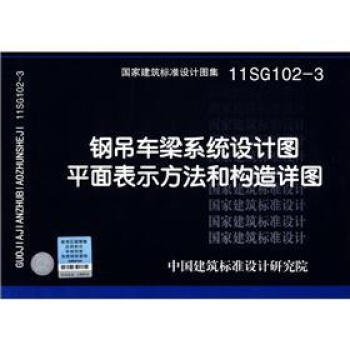


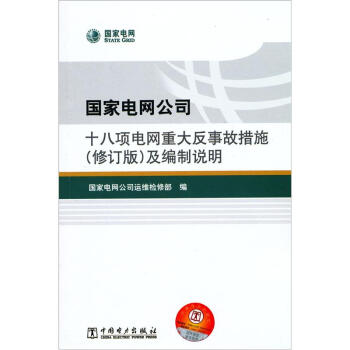



![食品分析(第三版) [Food Analysis] pdf epub mobi 电子书 下载](https://pic.tinynews.org/11077245/rBEHZ1BIerAIAAAAAADey9q0QecAABElAJ9_asAAN7j642.jpg)



![材料科学与工程学科系列教材:材料强韧学基础 [Strengthening and Toughening of Materials] pdf epub mobi 电子书 下载](https://pic.tinynews.org/11147444/rBEHaVDdA9gIAAAAAACaXIbwuS0AADcowIyiLwAAJp0583.jpg)
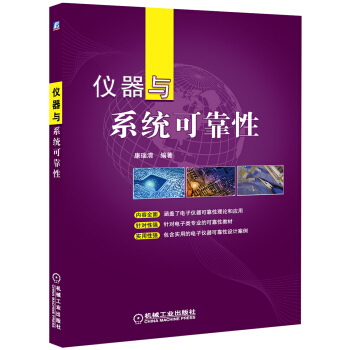
![AIAA航空天航技术丛书·飞机和旋翼机系统辨识:工程方法和飞行试验案例 [Aircraft and Rotorcraft System Ldentification:Engineering Methods whth Flight-Test Examples] pdf epub mobi 电子书 下载](https://pic.tinynews.org/11158582/rBEQWFD_S1wIAAAAAAj0NSlEyDwAAAEwgKduIcACPRN497.jpg)
